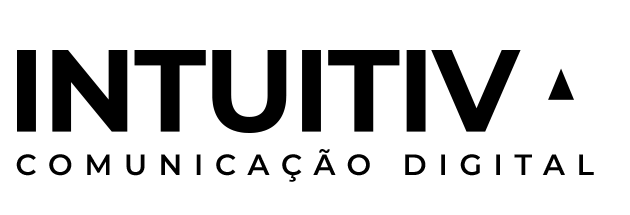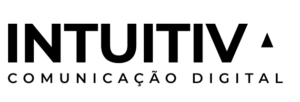In order to rank a website on the first page of Google in 2024, it is essential to employ effective strategies that align with Google’s ranking criteria. This article will discuss key tactics for optimizing website content, building quality backlinks, and utilizing social media engagement to enhance online visibility and search engine rankings.
Key Takeaways
- Understanding Google’s ranking factors is crucial for implementing successful SEO strategies.
- Creating high-quality and relevant content is key to attracting organic traffic and improving search rankings.
- Implementing SEO best practices such as proper keyword research and optimization can significantly impact website visibility.
- Building quality backlinks from reputable sources can improve domain authority and search engine rankings.
- Utilizing social media engagement to connect with followers and collaborate with influencers can enhance brand visibility and online presence.
Optimizing Website Content
Understanding Google’s Ranking Factors
To place a website on the first page of Google in 2024, it’s crucial to understand the ranking factors that the search engine uses. Google’s algorithms are complex and constantly evolving, but they aim to prioritize the most relevant, authoritative, and user-friendly content.
- Relevance: How well the content matches the search query.
- Authority: The quality and quantity of backlinks pointing to the website.
- Performance: The website’s loading speed and user experience.
- User Engagement: Metrics such as time on site, bounce rate, and click-through rate.
It’s essential to not only focus on keywords but also on the overall user experience and content quality to meet Google’s standards.
By keeping up-to-date with these factors and how they change over time, webmasters can adapt their strategies to improve their site’s visibility and ranking on Google.
Creating High-Quality Content
Creating high-quality content is essential for ranking on the first page of Google. Content must be relevant, informative, and provide value to the reader. Here are some key elements to consider:
- Originality: Ensure your content is unique and not duplicated from other sources.
- Relevance: Align your content with your audience’s interests and search intent.
- Readability: Use clear language and structure your content for easy reading.
- Engagement: Encourage user interaction through comments, shares, and other forms of engagement.
To stand out in 2024, it’s not just about what you say, but how you say it. Crafting content that resonates with your audience and prompts action is more important than ever.
Remember, the goal is to satisfy the user’s search intent fully. This means going beyond the surface and providing in-depth information that answers potential questions they might have. Keep your content updated to ensure it remains relevant and authoritative over time.
Implementing SEO Best Practices
Implementing SEO best practices is crucial for enhancing your website’s visibility and achieving that coveted first-page ranking on Google. Keyword optimization is at the heart of SEO; it’s about ensuring that your content not only contains relevant keywords but also matches the user’s intent. This involves a delicate balance between keyword density and natural language to avoid the pitfalls of keyword stuffing.
Effective SEO also requires a well-structured website. Here’s a simple checklist to ensure your site meets basic SEO standards:
- Mobile-friendly design
- Fast loading times
- Clear navigation
- SSL security
- Optimized meta tags
Remember, SEO is not a one-time task but an ongoing process. Regularly updating your content and staying abreast of Google’s algorithm changes are essential for maintaining and improving your rankings.
Another best practice is to monitor your site’s performance using tools like Google Analytics and Search Console. These platforms provide valuable insights into user behavior and can help identify areas for improvement. By continuously refining your SEO strategy, you can stay ahead of the competition and increase your chances of landing on the first page of Google search results.
Building Quality Backlinks
Strategies for Acquiring Backlinks
Acquiring backlinks is a critical component of SEO that can significantly boost your website’s visibility on Google. Networking with industry influencers and creating partnerships can lead to natural, high-quality backlinks. Participating in forums and contributing to discussions can also increase your site’s exposure and potential for backlinking.
- Guest blogging on reputable sites in your niche
- Creating shareable infographics and resource lists
- Offering testimonials for products or services you use
These strategies not only provide backlinks but also help establish your site as an authority in your field. It’s important to focus on the relevance and context of the backlinks rather than just the quantity.
Remember, the goal is to create backlinks that are valuable for your audience and that enhance the overall user experience. This approach will align with Google’s evolving algorithms and contribute to sustainable ranking improvements.
Evaluating Backlink Quality
When it comes to SEO, not all backlinks are created equal. Evaluating the quality of backlinks is crucial for improving your website’s ranking on Google. High-quality backlinks come from reputable and relevant websites and can significantly boost your SEO efforts.
To assess backlink quality, consider the following factors:
- The authority of the linking website
- The relevance of the content between the linking and receiving pages
- The ‘follow’ vs. ‘nofollow’ status of the link
- The diversity of the backlink profile
It’s important to regularly audit your backlink profile to identify and disavow low-quality or spammy links that could harm your website’s reputation.
A simple way to start evaluating backlinks is by using tools like Google Search Console or third-party SEO platforms. These tools can provide insights into the backlinks pointing to your site, allowing you to analyze their value and take action if necessary.
Leveraging Guest Posting
Leveraging guest posting is a strategic approach to building quality backlinks and enhancing your website’s visibility. By contributing valuable content to reputable sites in your industry, you can tap into their audience and direct traffic back to your own site. Ensure that each guest post is informative, engaging, and relevant to the host site’s audience to maximize the potential for clicks and shares.
- Identify potential guest posting sites that align with your niche.
- Reach out to site owners with a well-crafted pitch.
- Create content that adds value to the host site and includes a backlink to your website.
Remember, the goal of guest posting is not just to gain a backlink, but to establish yourself as an authority in your field. This can lead to more organic traffic and improved search engine rankings over time.
Utilizing Social Media Engagement
Engaging with Followers
Engagement with followers is crucial for boosting your website’s visibility on Google. Regular interaction with your audience can lead to increased sharing of your content, which indirectly influences your search rankings. Here are some effective ways to engage:
- Respond promptly to comments and messages.
- Create interactive content such as polls or quizzes.
- Host live sessions to answer questions in real-time.
Engagement isn’t just about responding; it’s about starting conversations and building a community around your brand. By doing so, you create a network of loyal followers who are more likely to promote your content organically.
Remember, social signals are part of Google’s ranking factors. The more your content is liked, shared, and commented on, the more it signals to Google that your site is providing value, which can help in achieving that coveted first-page ranking.
Leveraging Social Media Platforms
Social media platforms are powerful tools for increasing visibility and driving traffic to your website. By actively engaging on platforms where your target audience spends their time, you can amplify your content and enhance your online presence.
- Identify the most relevant platforms for your niche.
- Create a consistent posting schedule.
- Utilize platform-specific features (e.g., Instagram Stories, Twitter Polls).
- Engage with users through comments, messages, and community posts.
By tailoring your approach to each platform, you can create a unique and engaging experience that resonates with your audience and encourages them to visit your website.
Remember, each social media platform has its own set of algorithms that can affect how your content is displayed to users. It’s crucial to stay updated with the latest trends and algorithm changes to ensure your strategy remains effective.
Utilizing Influencer Collaborations
Collaborating with influencers can significantly amplify your brand’s reach and improve your site’s visibility on Google. Influencers with a robust following in your niche can drive targeted traffic, which signals to Google that your content is valuable and relevant to users’ interests.
To maximize the impact of influencer collaborations, consider the following steps:
- Identify influencers who align with your brand values and have an engaged audience.
- Establish clear collaboration goals, such as increasing brand awareness or driving website traffic.
- Negotiate terms that benefit both parties, ensuring the influencer’s content aligns with your SEO objectives.
It’s essential to track the performance of influencer collaborations to understand their impact on your SEO efforts. Use analytics tools to monitor referral traffic, engagement metrics, and any increases in search rankings attributable to the partnership.
Remember, the quality of the influencer’s engagement with their audience can be more valuable than the size of their following. A smaller, more engaged audience can lead to better SEO results than a larger, less interactive group.
Conclusion
In conclusion, achieving a top ranking on Google’s first page in 2024 requires a strategic approach that combines high-quality content, effective SEO techniques, and continuous optimization. By following the latest trends and best practices in digital marketing, website owners can increase their visibility and attract more organic traffic. It is essential to stay updated with Google’s algorithm changes and adapt your strategies accordingly to stay ahead of the competition. With dedication, patience, and a data-driven mindset, reaching the coveted first page of Google is within reach for any website in 2024.
Frequently Asked Questions
How important is website content for ranking on Google?
Website content is crucial for ranking on Google as it helps search engines understand the relevance and quality of your site.
Why are backlinks important for SEO?
Backlinks are important for SEO because they serve as a vote of confidence from other websites, indicating the credibility and authority of your site.
What are some effective strategies for acquiring backlinks?
Effective strategies for acquiring backlinks include reaching out to relevant websites for collaborations, creating valuable content that naturally attracts backlinks, and participating in industry forums and communities.
How can social media engagement impact a website’s ranking on Google?
Social media engagement can indirectly impact a website’s ranking on Google by increasing brand visibility, driving traffic to the site, and potentially attracting backlinks from social media shares.
What role do influencers play in social media engagement for SEO?
Influencers can play a significant role in social media engagement for SEO by amplifying brand reach, increasing credibility, and potentially generating valuable backlinks through collaborations and endorsements.
How can I measure the quality of backlinks pointing to my website?
You can measure the quality of backlinks by assessing factors such as the authority of the linking domain, the relevance of the linking page to your content, and the anchor text used in the backlink.

